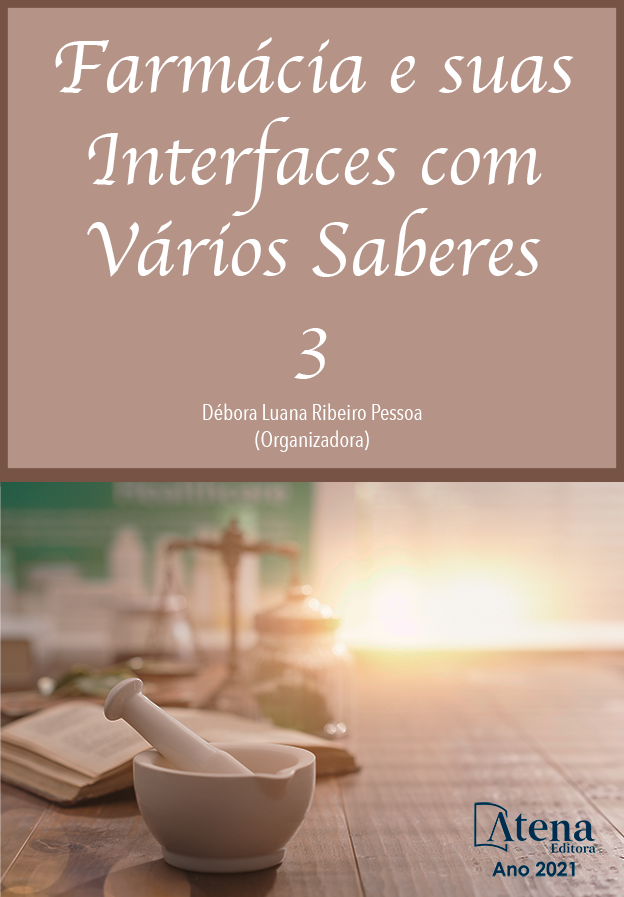
ATIVIDADES ANTINOCICEPTIVA E ANTI-INFLAMATÓRIA DE CHALCONAS SINTÉTICAS SUBSTITUÍDAS EM MODELOS DE DOR AGUDA
Existe uma necessidade de desenvolvimento de fármacos para o tratamento de dor aguda, e muitos trabalhos descrevem as chalconas como fonte de novos produtos bioativos. O objetivo deste trabalho foi avaliar os efeitos antinociceptivo e anti-inflamatório in vivo das chalconas sintéticas substituídas LC24 (4’-metoxichalcona) e LC41 (4-nitro-2’-clorochalcona), cujas atividades anti-inflamatórias in vitro já haviam sido descritas. Foram utilizados camundongos Swiss machos, pré-tratados via intraperitoneal com o veículo, ou com os controles positivos ou com as chalconas. Foi realizado o teste da formalina, sendo esta injetada via intraplantar, e então cronometrado o tempo gasto do animal lambendo a pata nas fases neurogênica e inflamatória. O segundo ensaio foi o teste da placa quente, no qual os animais foram colocados sobre esta e cronometrado o tempo de latência até que agitassem as patas. E, por último, o teste da placa quente modificado, no qual foram administrados carragenina e salina nas patas traseiras esquerda e direita, respectivamente. Posteriormente, os animais foram colocados sobre a placa quente e calculada a diferença dos tempos de latência entre as patas. Observou-se que no teste da formalina, LC24 e LC41 apresentaram efeito antinociceptivo, reduzindo o tempo de lambida da pata em ambas as fases. Para confirmar o efeito na fase neurogênica, realizou-se o teste de placa quente. Porém, nenhuma das chalconas apresentou efeito significativo neste teste. O efeito antinociceptivo observado na fase inflamatória do teste da formalina também foi obervado no teste de placa quente modificado com carragenina, onde ambas as chalconas reduziram a variação de latência entre as patas. Pode-se concluir que LC24 e LC41 apresentaram efeitos antinociceptivos in vivo, por mecanismos centrais quando a dor foi desencadeada por estímulo químico, mas não por estímulo térmico. Ambas as chalconas apresentaram efeito antinociceptivo relacionado a mecanismos anti-inflamatórios.
ATIVIDADES ANTINOCICEPTIVA E ANTI-INFLAMATÓRIA DE CHALCONAS SINTÉTICAS SUBSTITUÍDAS EM MODELOS DE DOR AGUDA
-
DOI: 10.22533/at.ed.82121120613
-
Palavras-chave: nocicepção, inflamação, chalcona
-
Keywords: nociception, inflammation, chalcone
-
Abstract:
There is a need to develop drugs for the treatment of acute pain, and many studies describe chalcones as a source of new bioactive products. The objective of this work was to evaluate the antinociceptive and anti-inflammatory effects in vivo of the substituted synthetic chalcones LC24 (4'-methoxychalcone) and LC41 (4-nitro-2'-chlorochalcone), whose in vitro anti-inflammatory activities had already been described. Male Swiss mice, pre-treated intraperitoneally with the vehicle, or with positive controls or chalcones, were used. The formalin test was performed, which was injected via intraplantar, and then the time the animal spent licking its paw in the neurogenic and inflammatory phases was counted. The second test was the hot plate test, in which the animals were placed on it and the latency time was measured until the paws were shaken. And finally, the modified hot plate test, in which carrageenan and saline were administered to the left and right hind legs, respectively. Subsequently, the animals were placed on the hot plate and the difference in the latency times between the paws was calculated. It was observed that in the formalin test, LC24 and LC41 showed an antinociceptive effect, reducing the paw licking time in both phases. To confirm the effect on the neurogenic phase, the hot plate test was performed. However, none of the chalcones had signficant effects on this test. The antinociceptive effect observed in the inflammatory phase of the formalina test was also observed in the modified hot plate test with carrageenan, where both chalcones reduced the variation in latency between paws. It can be concluded that LC24 and LC41 showed antinociceptive effects in vivo, due to central mechanisms when pain was triggered by chemical stimulus, but not by thermal stimulus. Both chalcones presented antinociceptive effect due to anti-inflammatory actions.
-
Número de páginas: 18
- Paula Lima do Carmo
- Michelle Frazão Muzitano
- Juliana Montani Raimundo
- André Gustavo Calvano Bonavita
- Ivana Correa Ramos Leal
- Rodrigo Octavio Mendonça Alves de Souza
- João Vitor Rocha Reis
- Mirella da Costa Botinhão
- Isabela Souza dos Santos
- Evelynn Dalila Do Nascimento Melo


